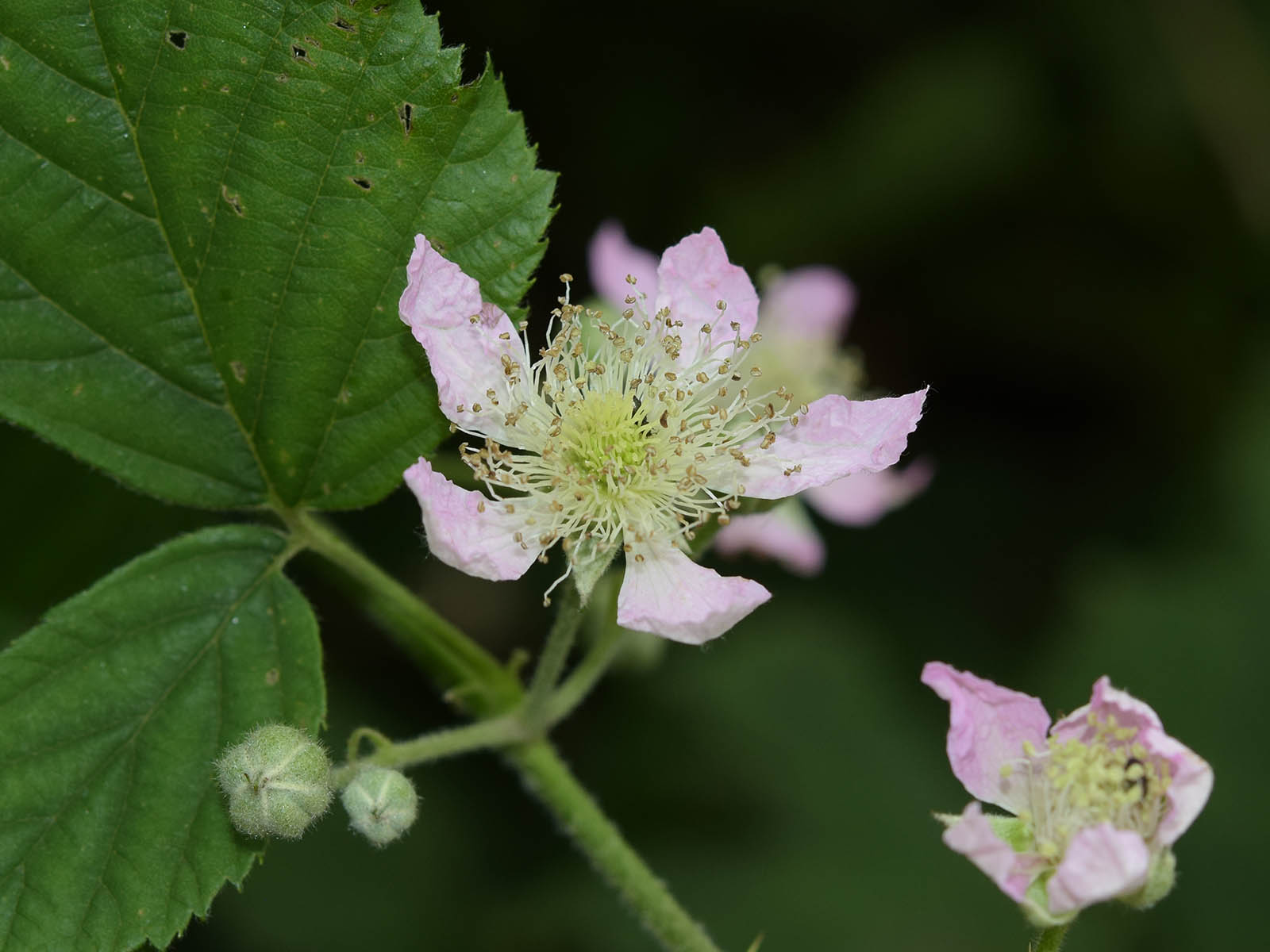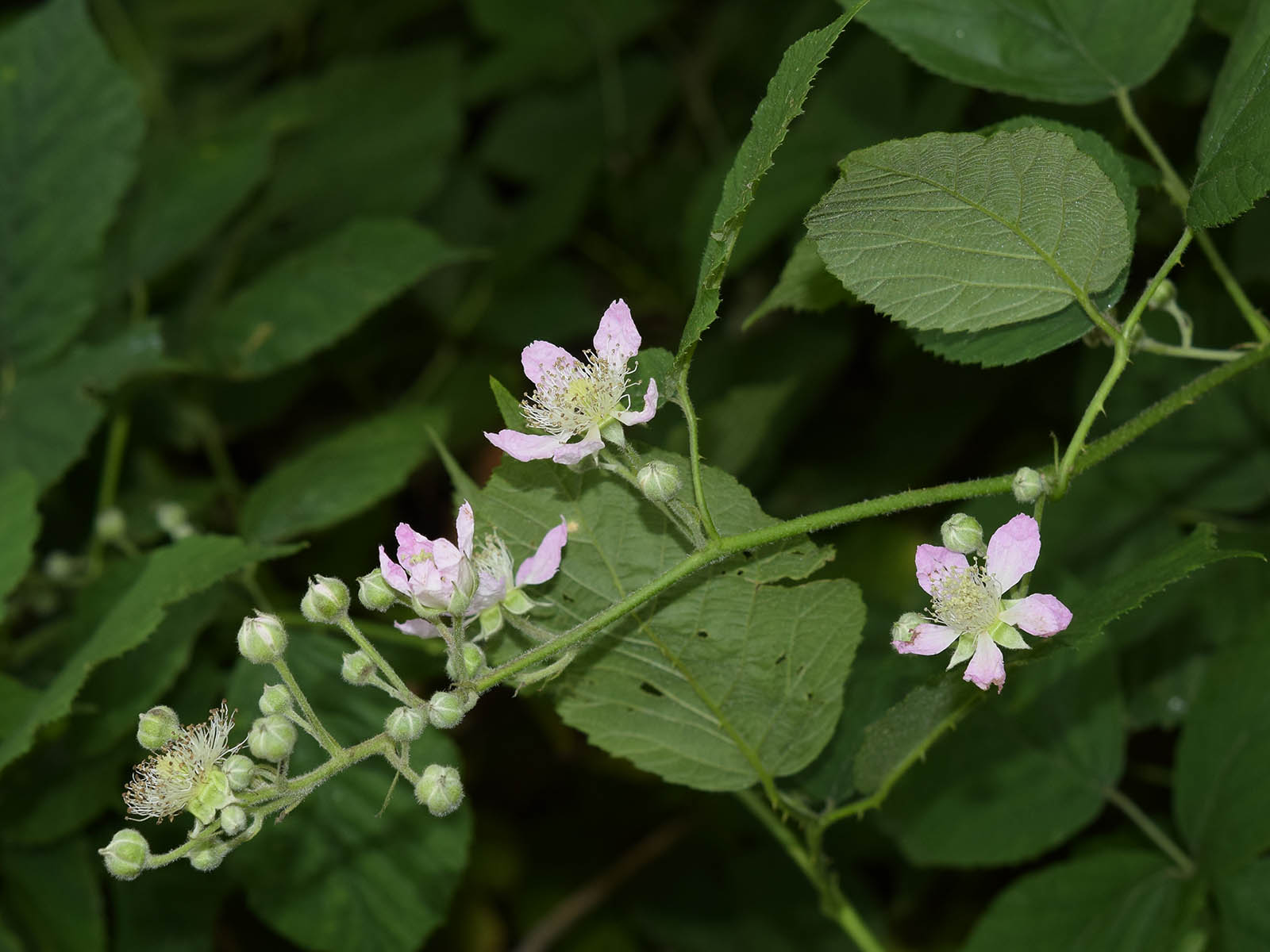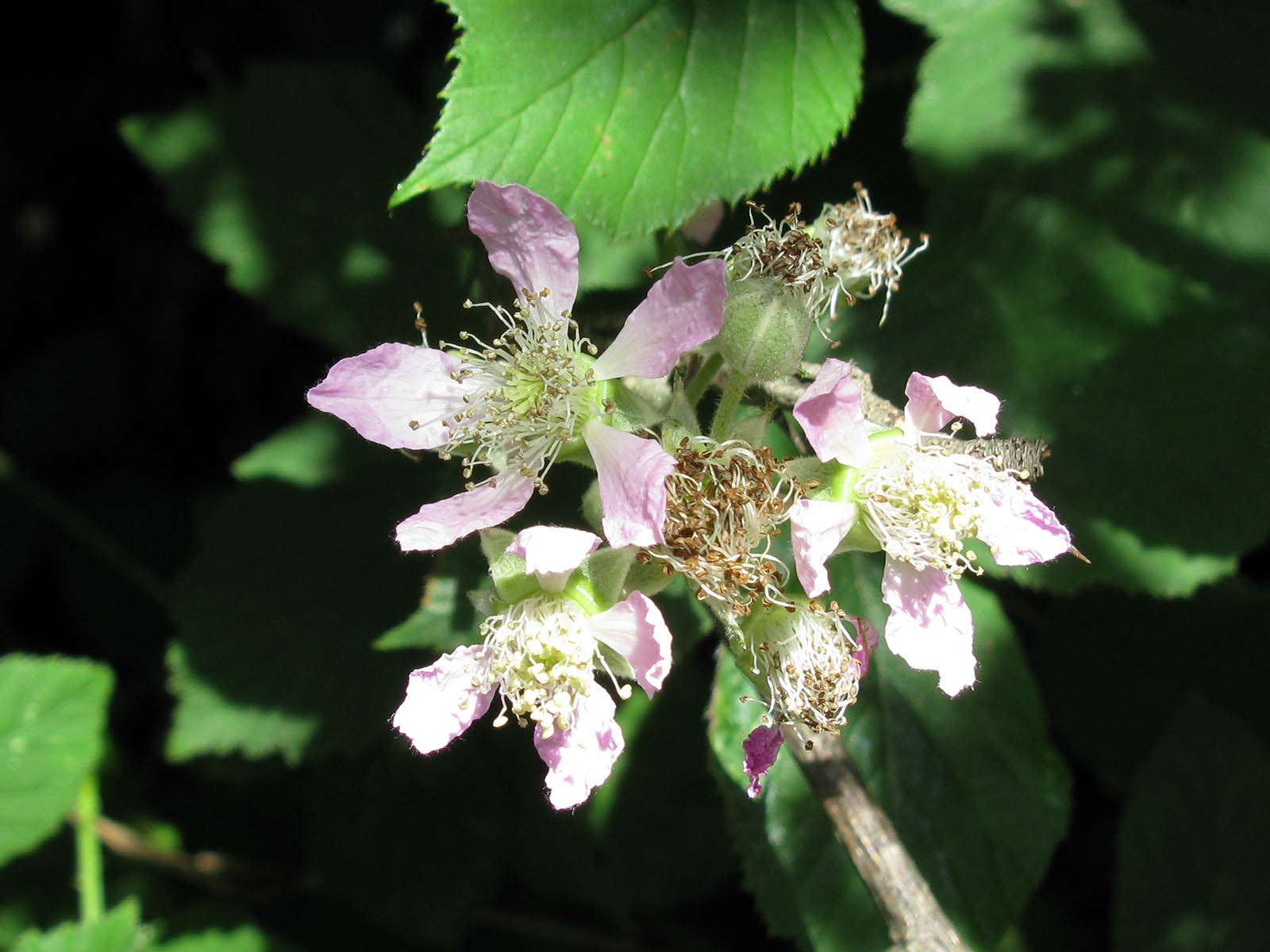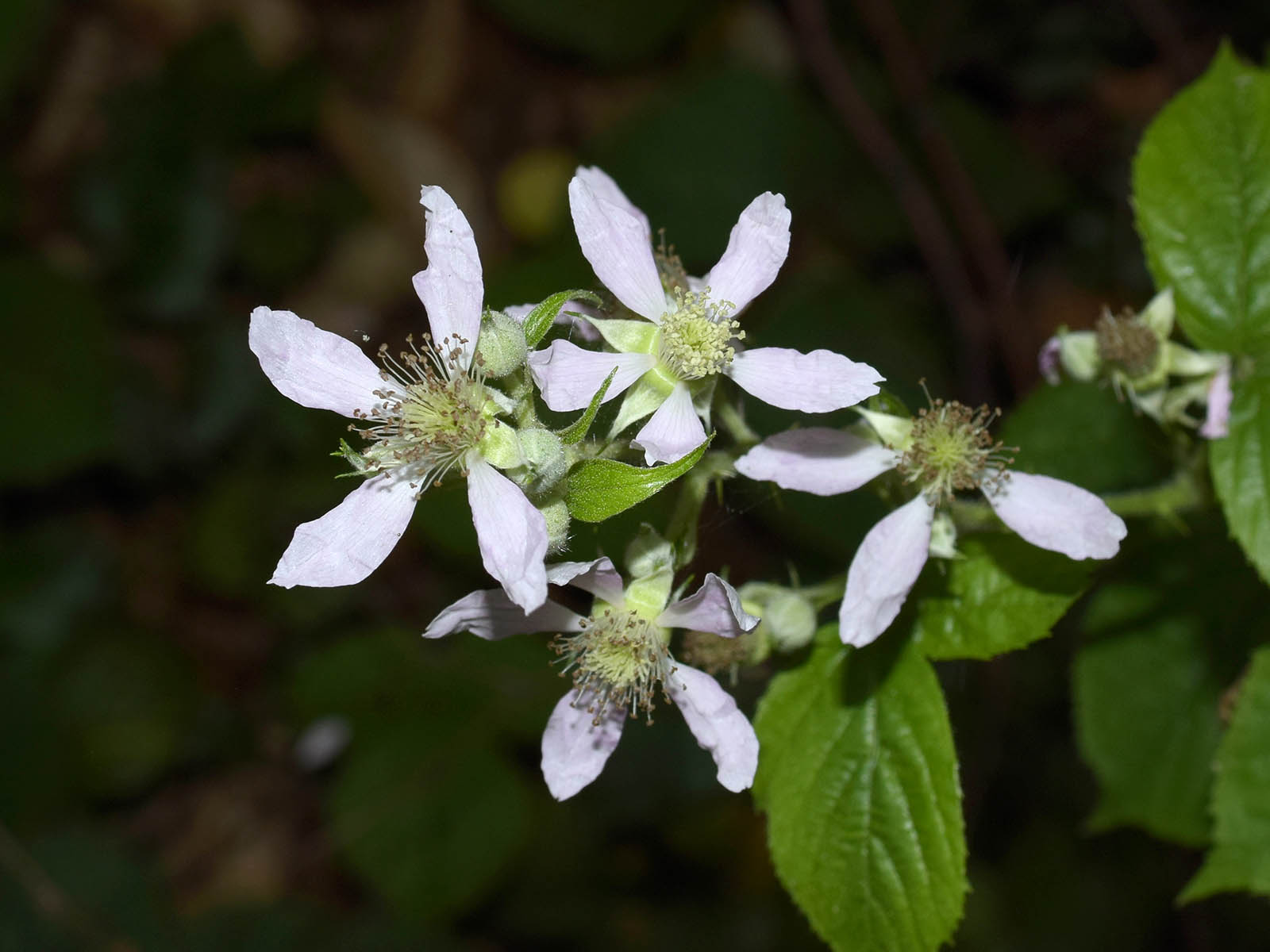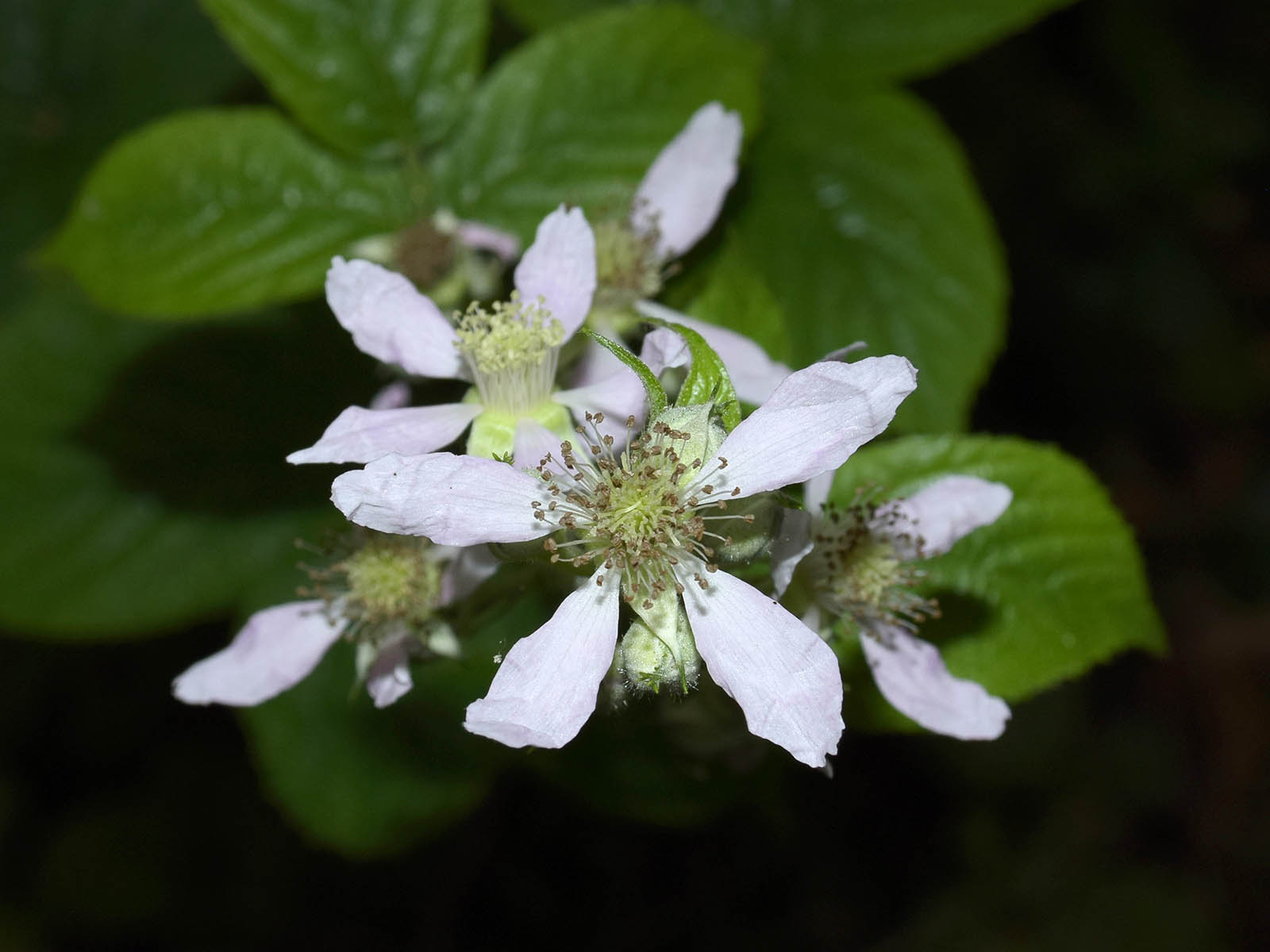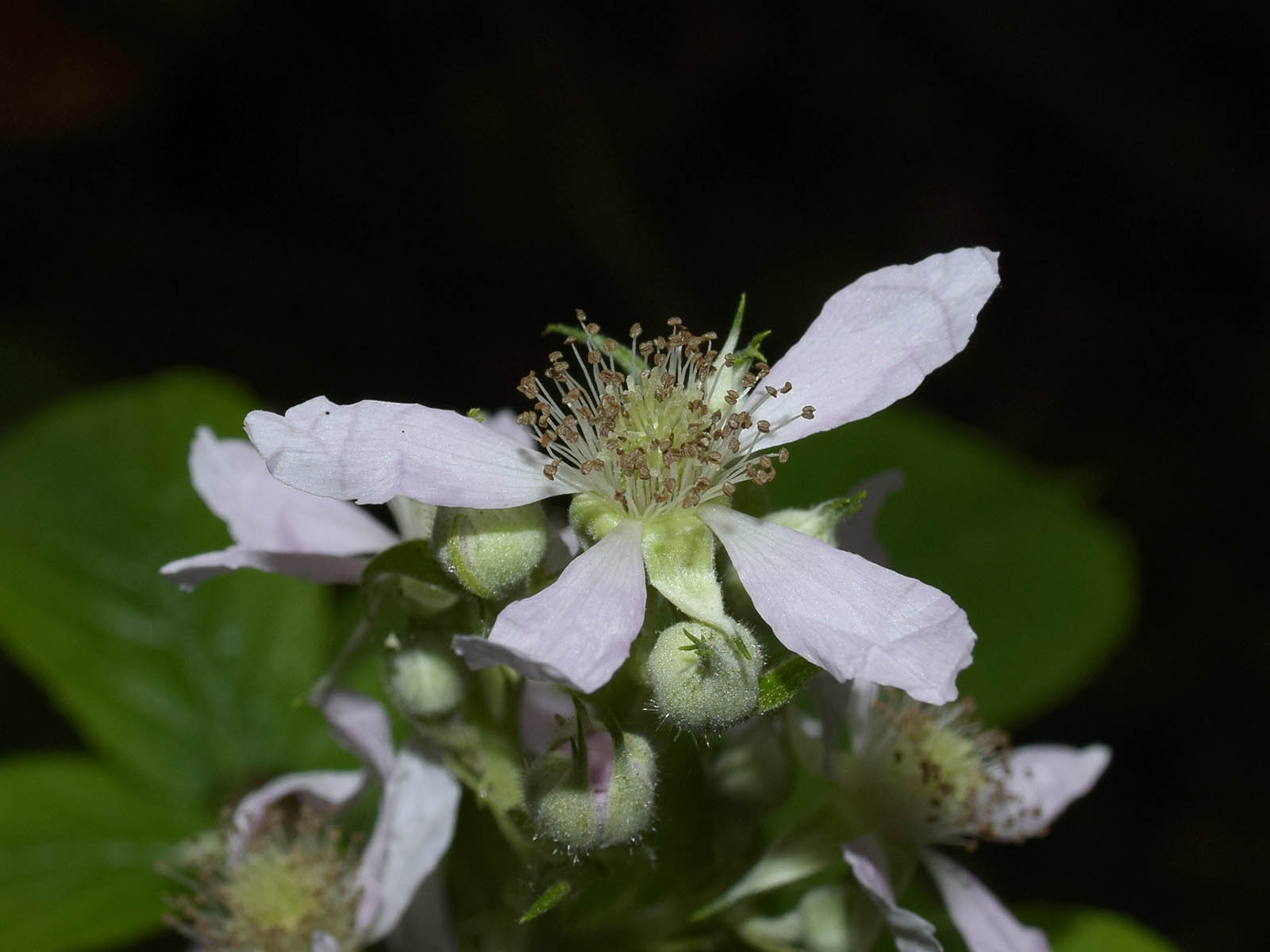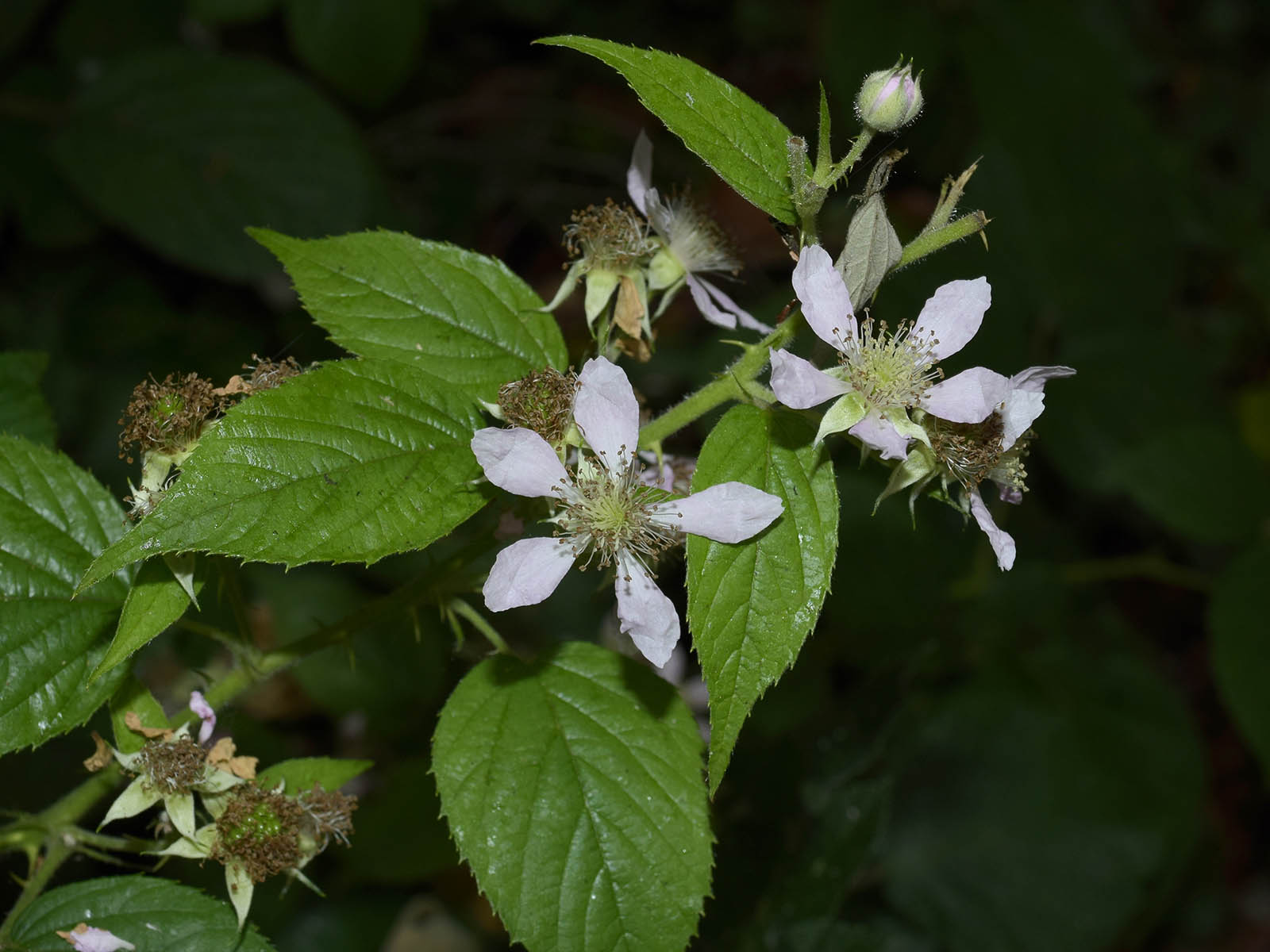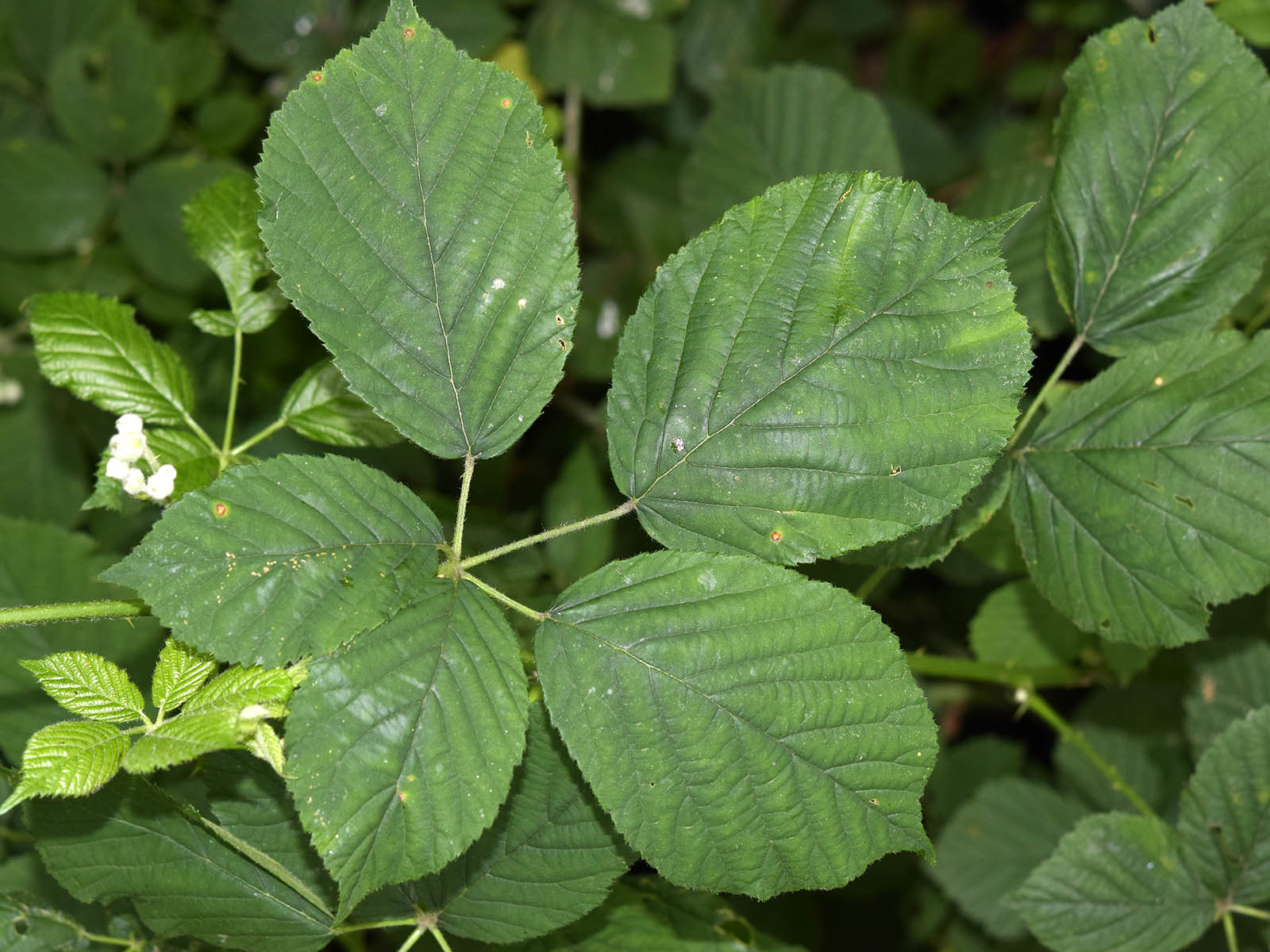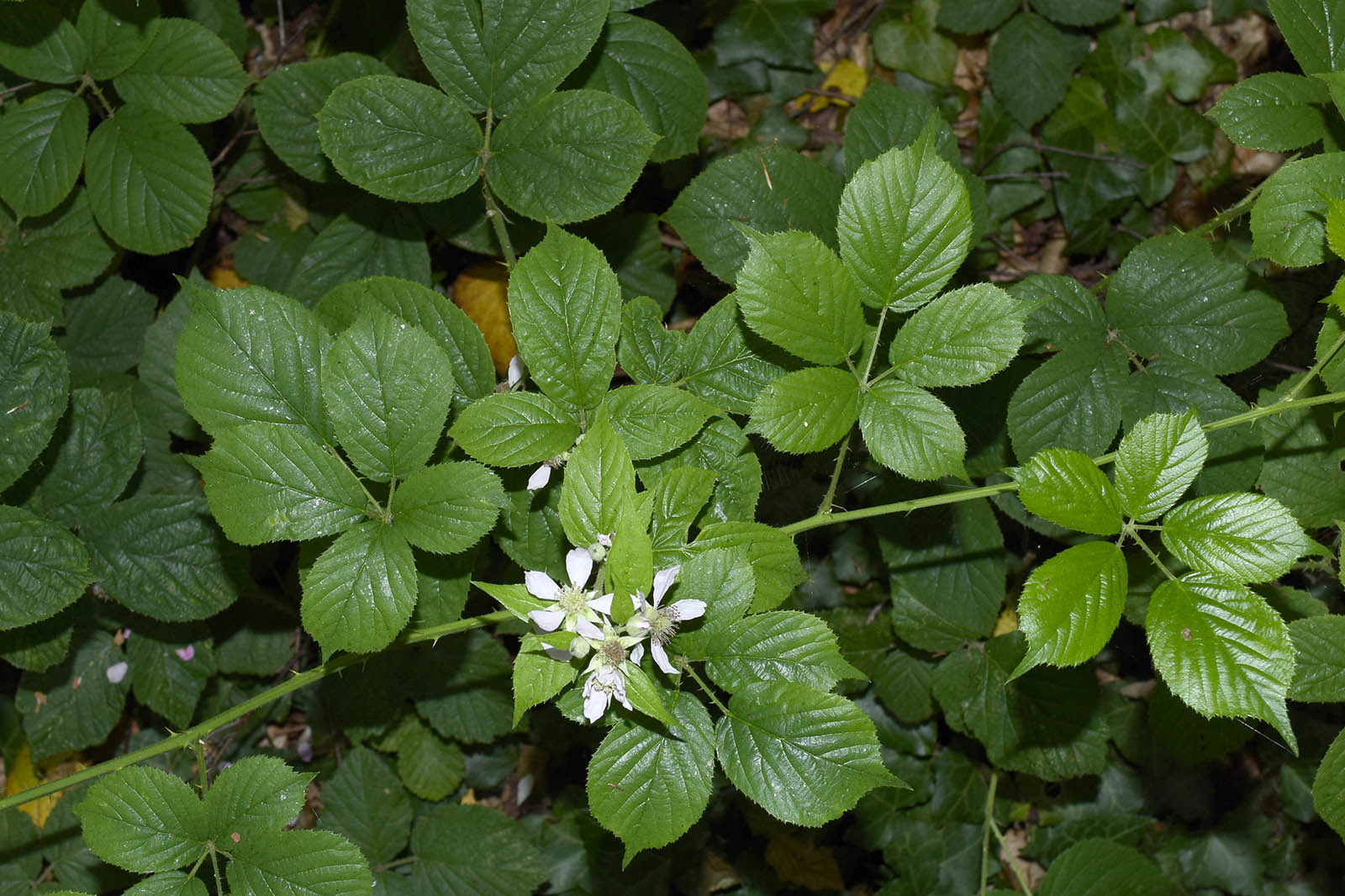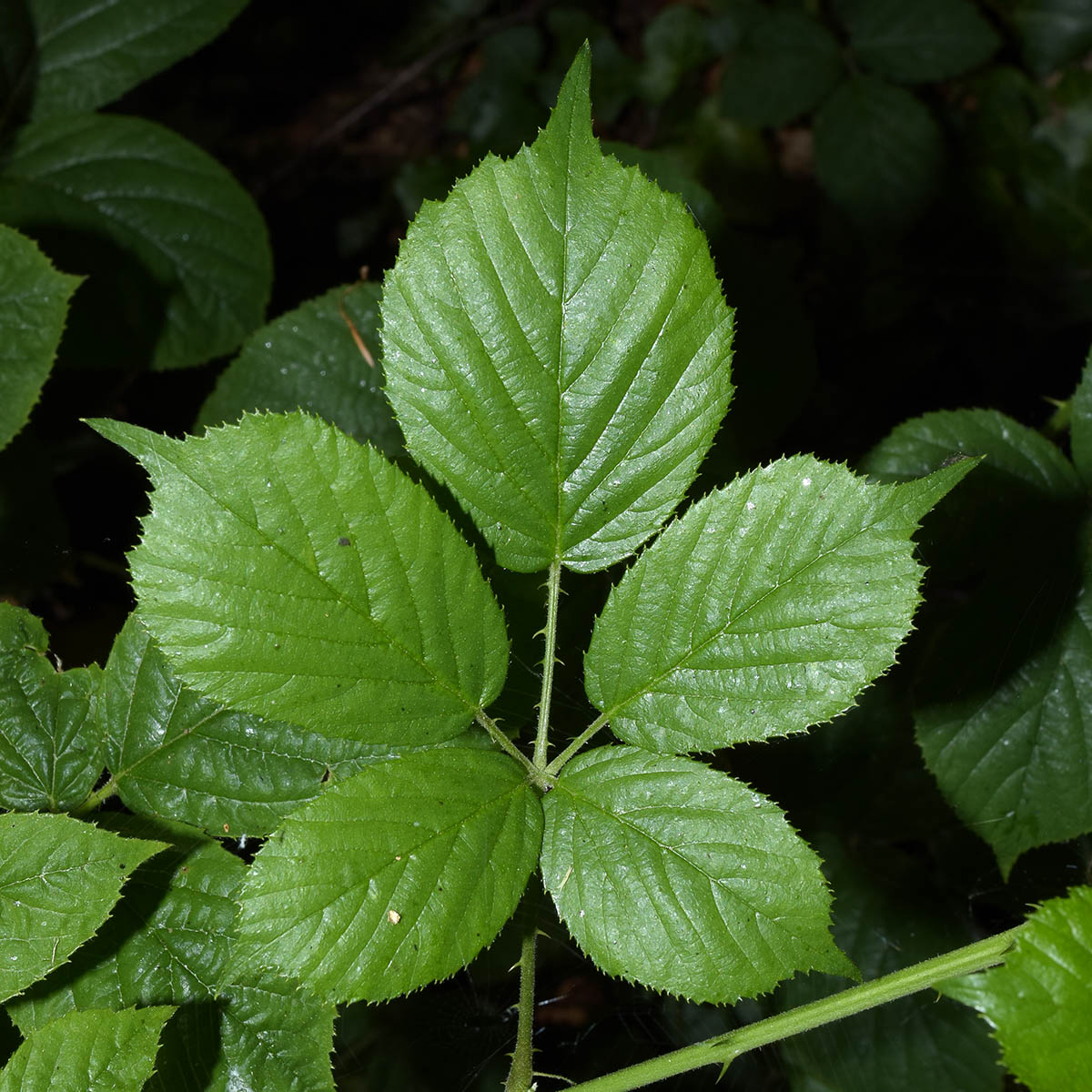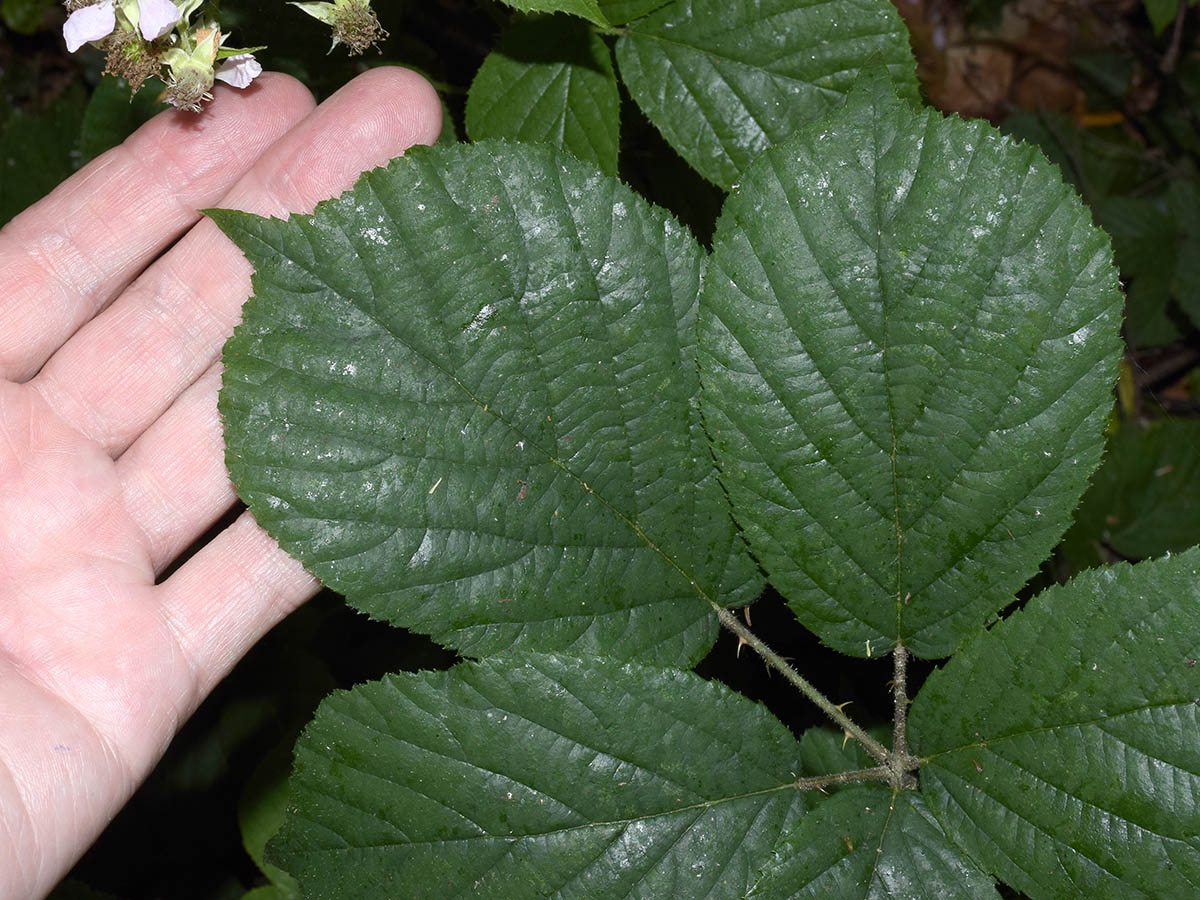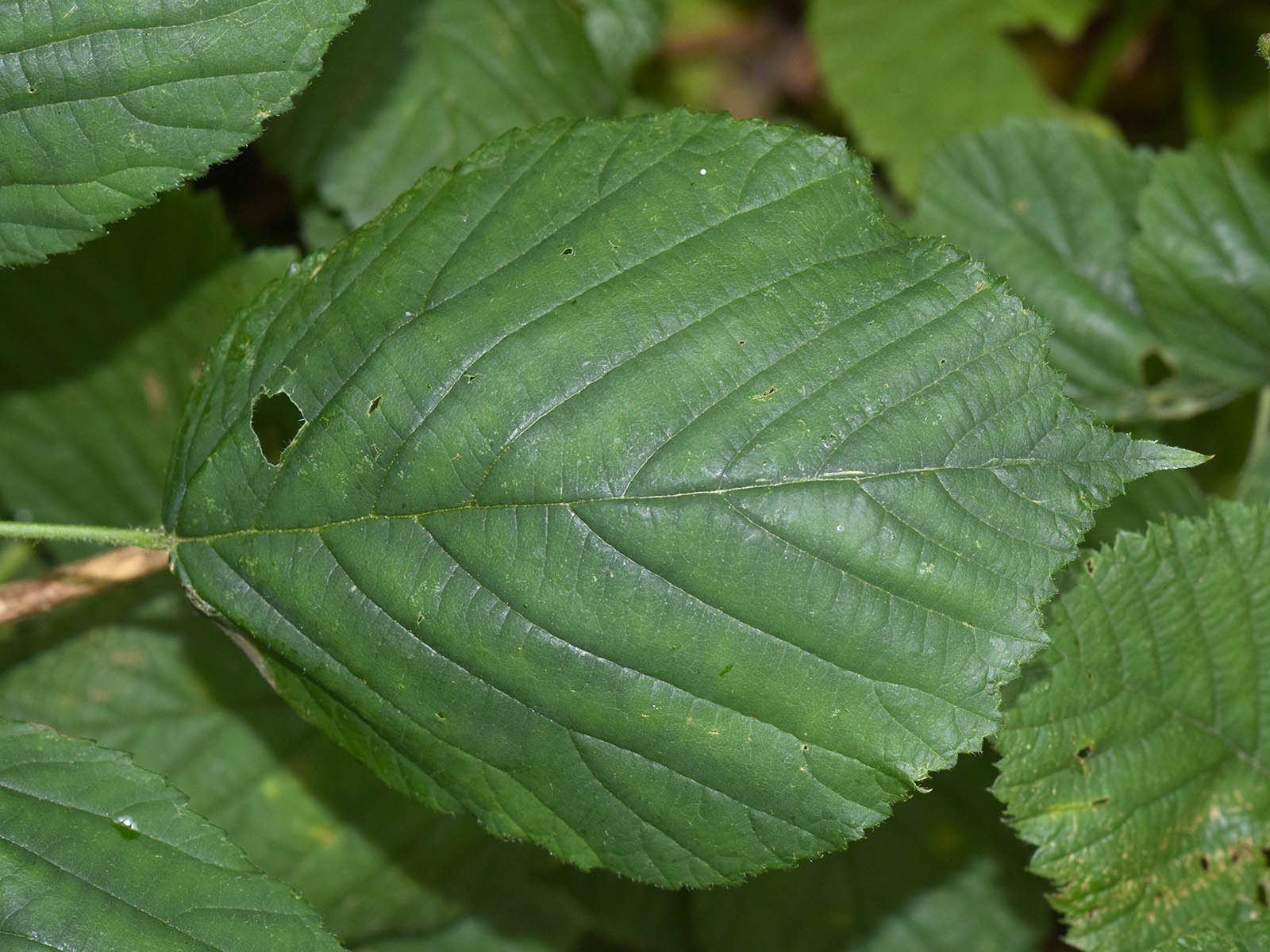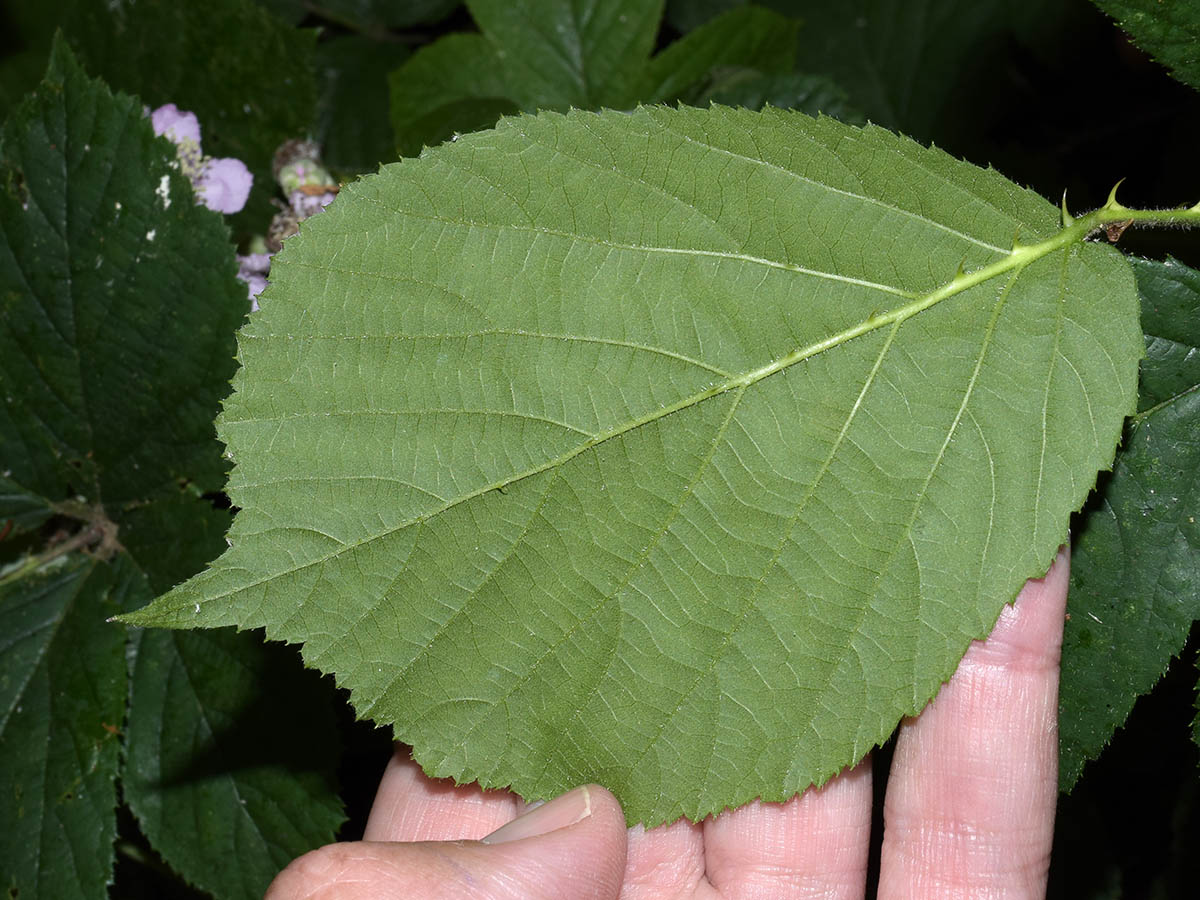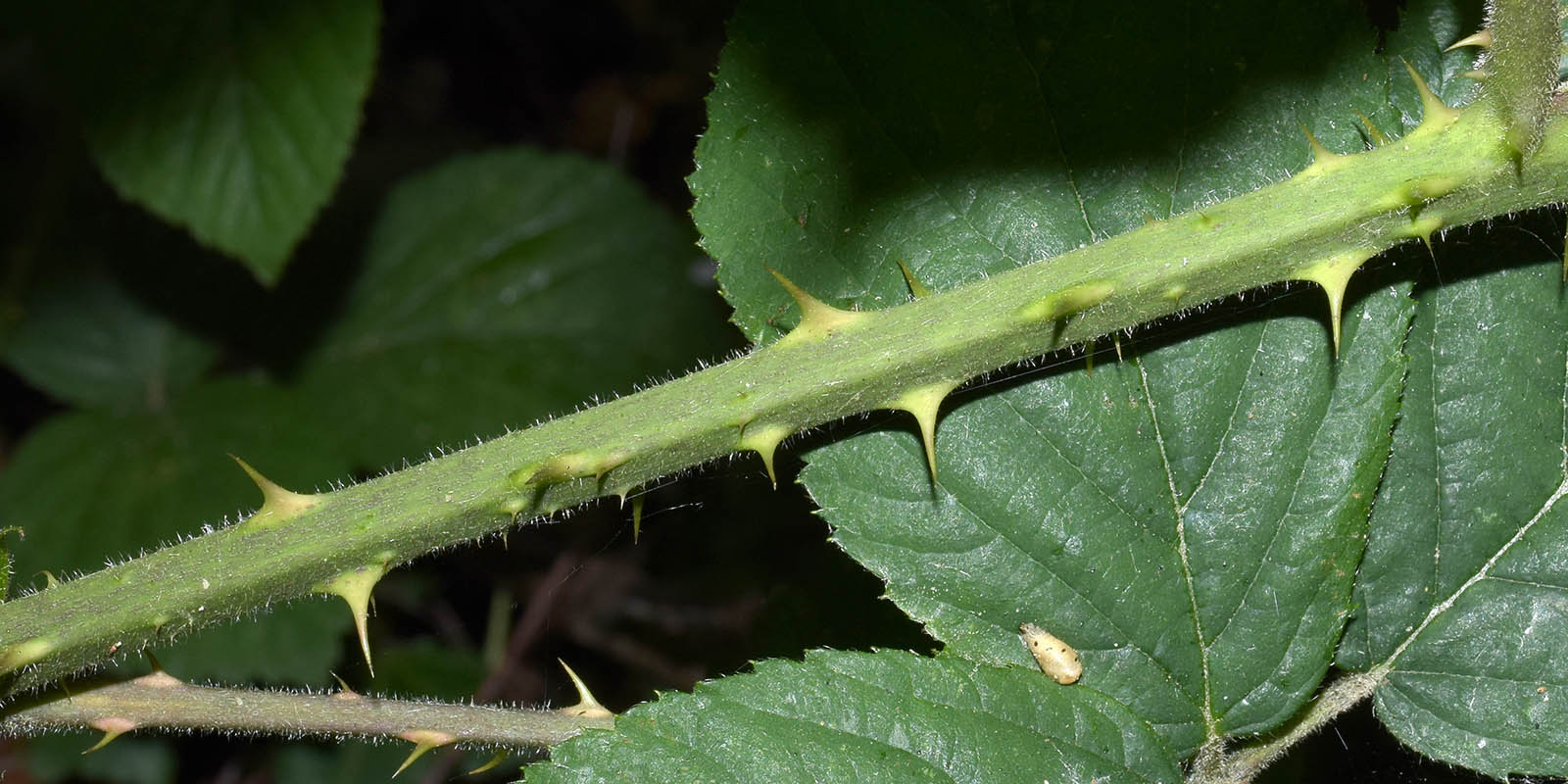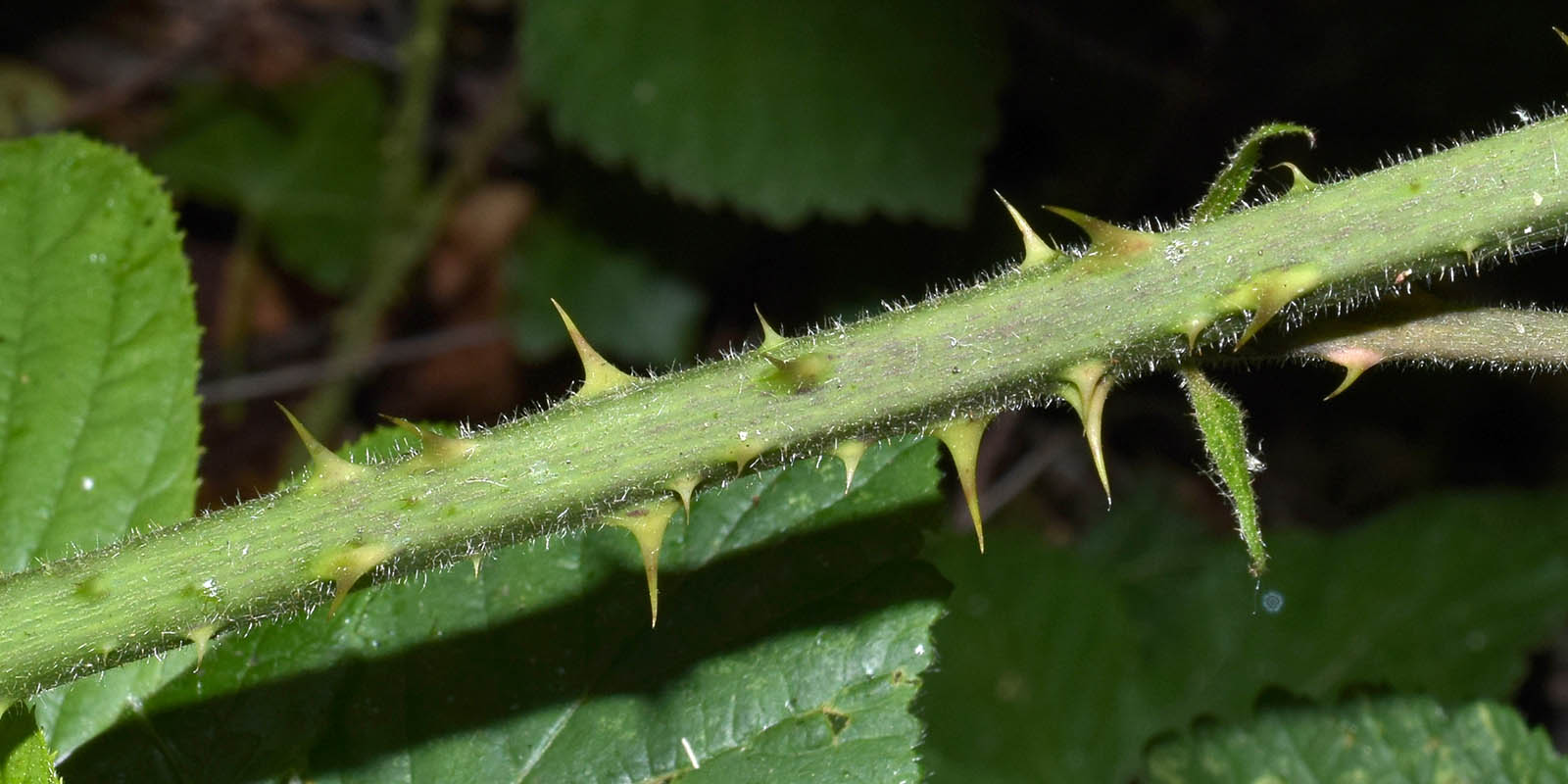
Rubus ‘Hampshire wirralensis’ – Series Mucronati
back to Alphabetical index · Taxonomic index
A so far unnamed taxon recorded from a small coastal area of central southern Hampshire, possibly allied to R. wirralensis. It has been shown here in case someone recognises it as something more widespread on the continent (it is believed to occur in northern France). It is a distinctive species with long narrow rose-pink petals, very large nearly round convex terminal leaflets, long-pointed patent sepals and a hairy stem with long fine declining prickles and short glands. The leaflet shape is suggestive of series Mucronati, but the apex of the terminal leaflet is perhaps too long to be typical for that group and it could be placed in the Vestiti instead.
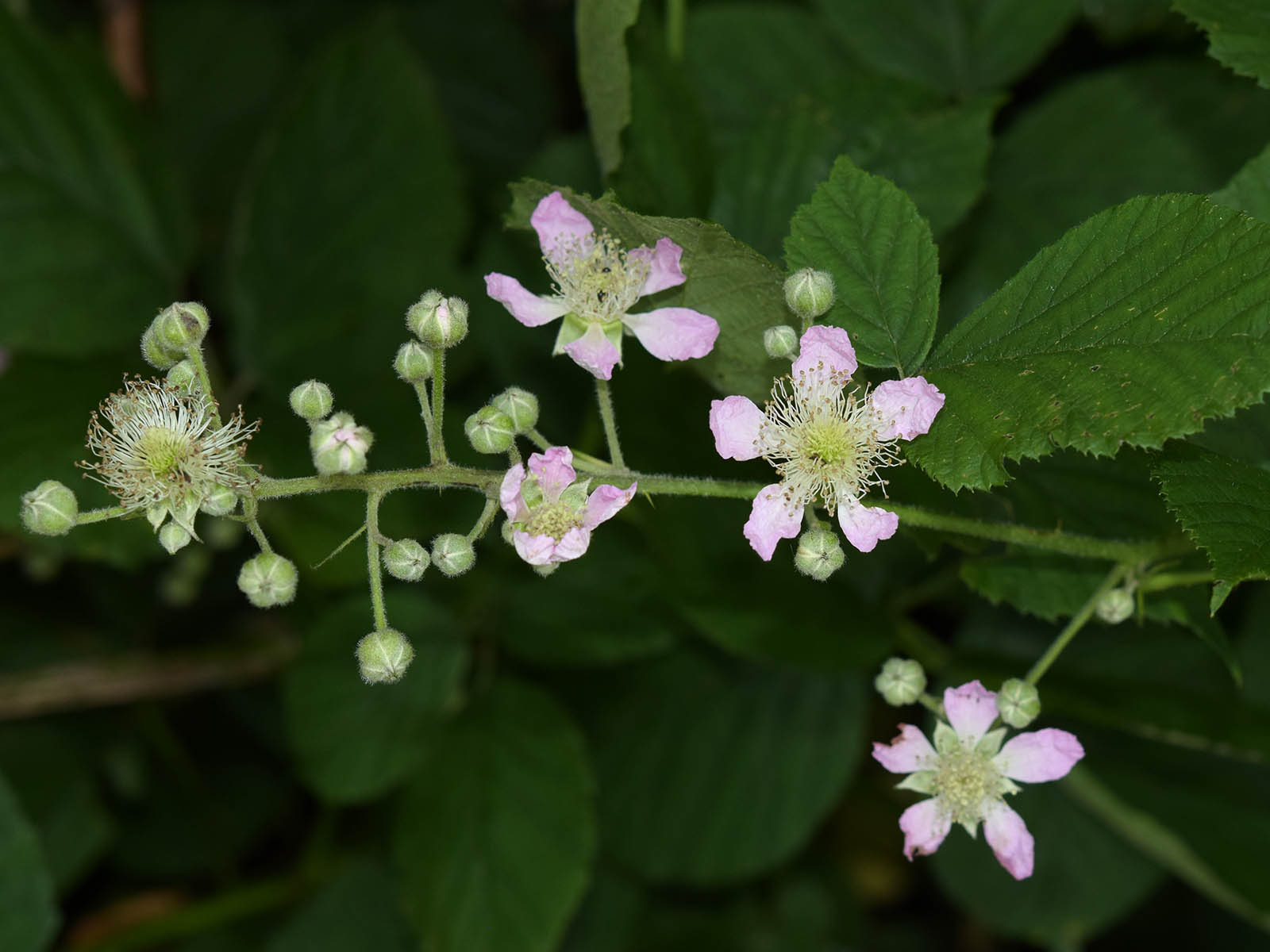
It was first collected by David Allen from a gravel workings in the Alver Valley, Gosport, Hampshire (VC11) in 1985 and given the serial number H867. The specimen was sent to Alan Newton, the national Rubus referee twice, but he could not name it. David Allen was also sure he had seem the same plant in the far north of Brittany in northern France. After a long gap, he refound it on an old common close the original site in 2007 and at Park Gate (west of nearby Fareham) in 2008. David Allen became convinced it was a shade form of R. wirralensis, a mainly western and northern species in Britain, but was eventually persauded that it was different. Subsequently I have discovered more bushes in Gosport and a colony at an old brickworks at Swanwick (to the west of Park Gate). The current linear range of the taxon is therefore about 16km. A large clump of something similar but with glabrous, eglandular stems was also found in woodland in a cemetery in Stubbington (just south of Fareham).
The inflorescence consists of a non-leafy, narrowly pyramidal terminal portion with some ascending branches lower down and has relatively few flowers. Note that some of the photos below are of a panicle which has been previously cut and has small leaflets among the flowers, which is atypical. The rachis and pedicels appear almost unarmed or with scattered fine slanting prickles. The petals are narrowly elliptical, c.14-16(-17) x 6-7mm with a pointed, notched or irregularly toothed apex, and fall easily. Carpels and receptacle are hairy. The primocane is sparsely or moderately hairy with sparse to frequent short-stalked glands. It seems to prefer shady woodland but at the Park Gate site it occurs in a trimmed hedgerow bordering a small car park in the middle of a built up area.
